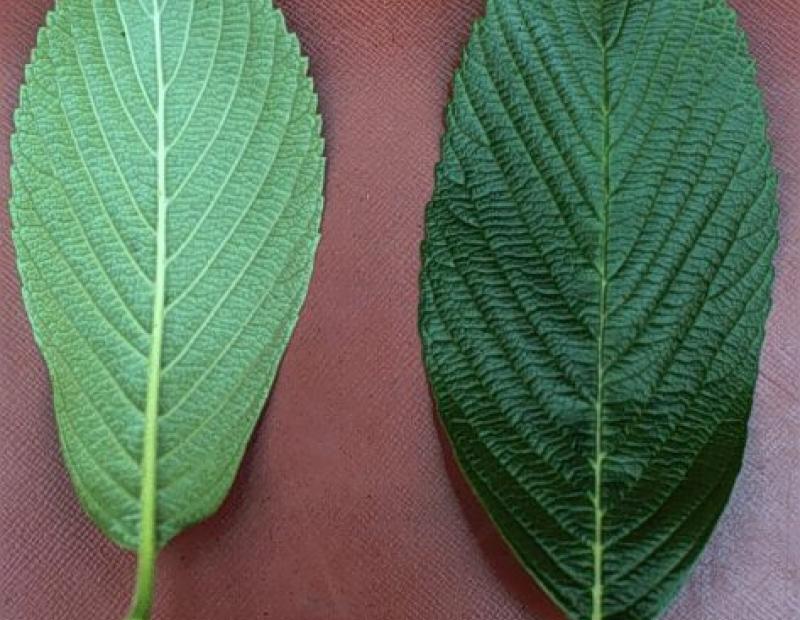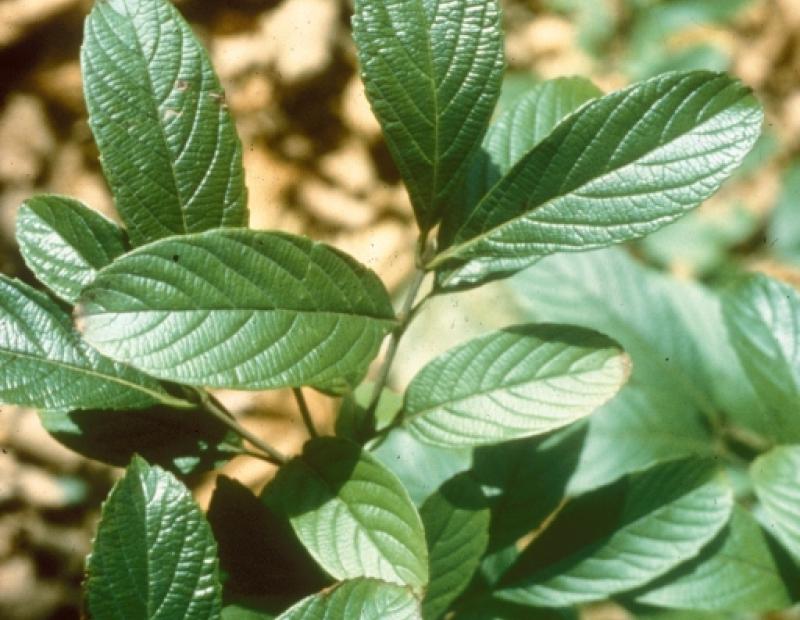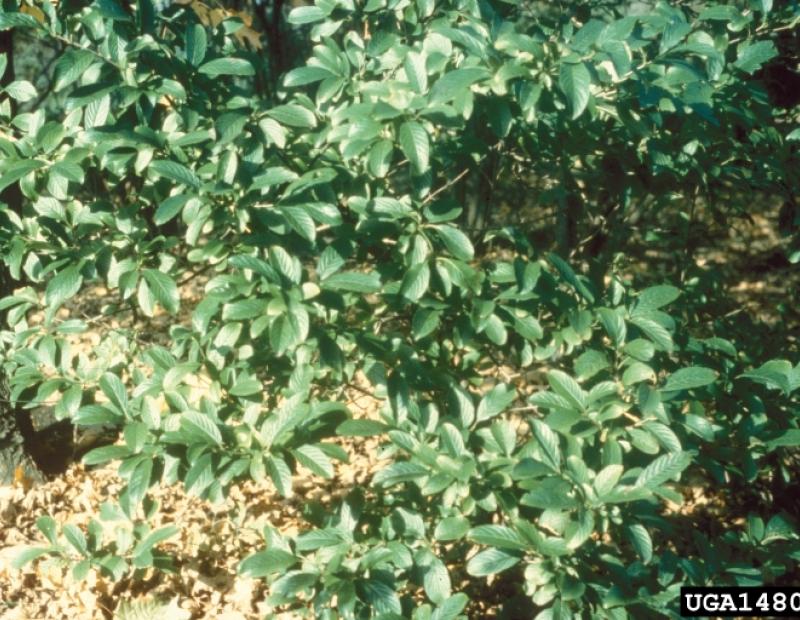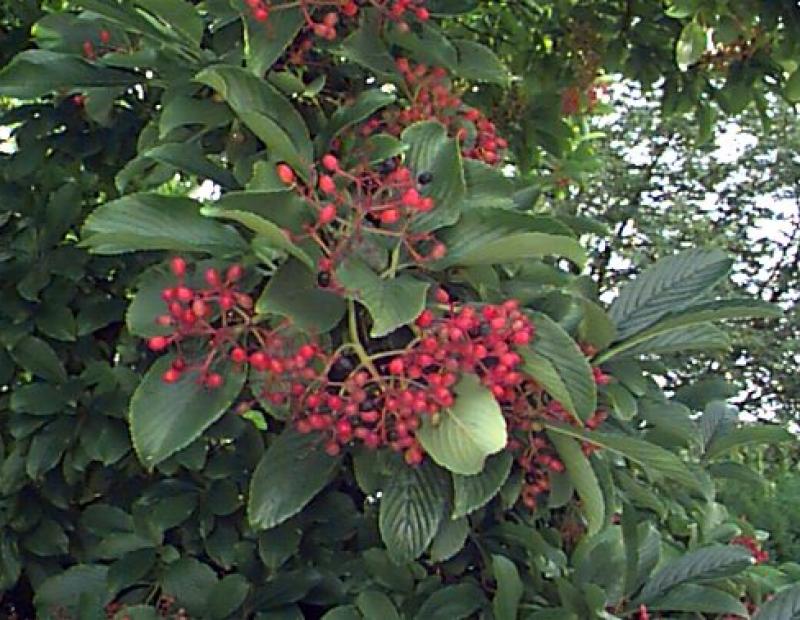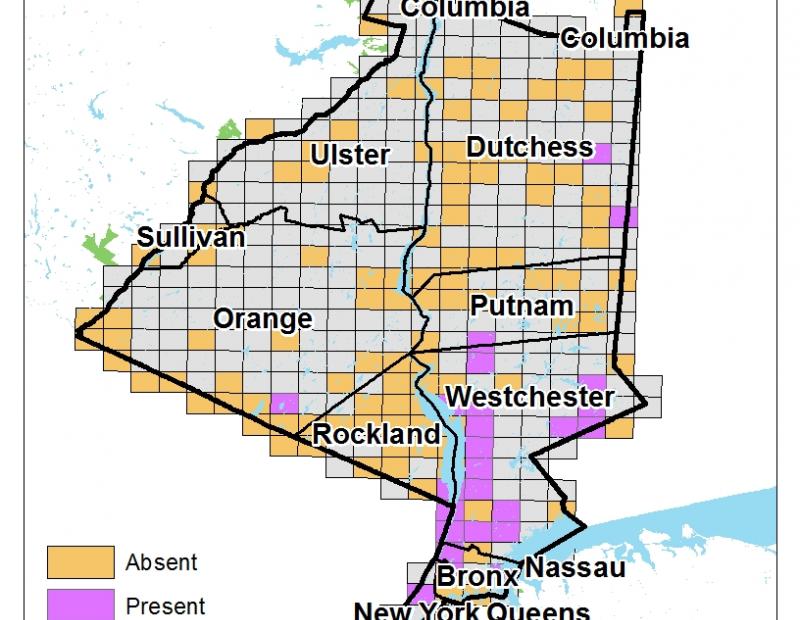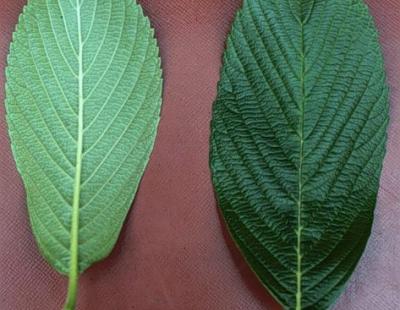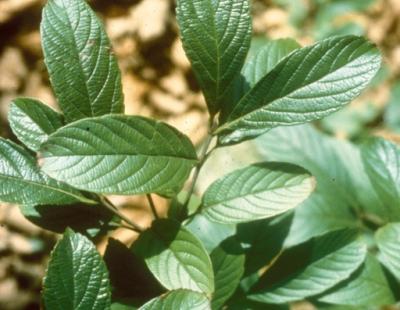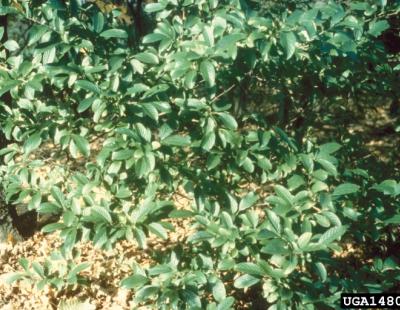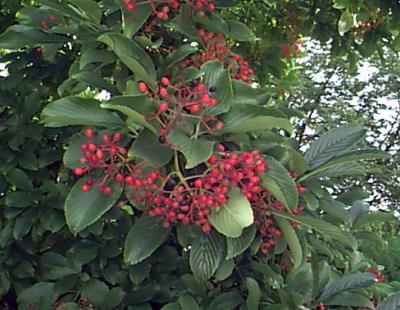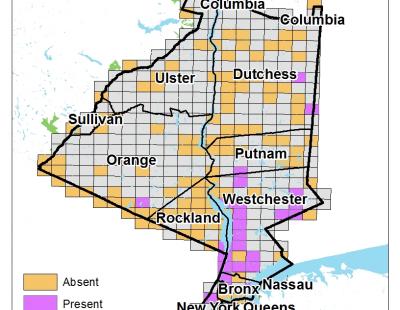Vertical Tabs
- Siebold’s viburnum is a member of the Moschatel family (Adoxaceae)
- Siebold’s viburnum is a large shrub native to Japan. (8)
Leaves
Leaves are 2-5 inches long, opposite, simple, and deciduous— although highly glossy and quite tough. The leaf margin is serrated. Veins are thick and prominent on the underside of the leaf. Leaves have a very pungent burnt rubber smell.
Flowers
Large clusters of creamy white flowers emerge in May and June. Clusters are large— approximately 6 inches in width.
Fruit/Seed
Pinkish-red to black single-seeded fruits ripen in late summer through fall. Fruit is attractive to birds and other small mammals and is borne on bright red stems.
As a relatively new introduction, the ecological ramifications of Siebold’s viburnum are yet unknown. A large, quick growing, shade tolerant shrub with a high reproductive potential, the species is capable of changing both the composition and density of the shrub layer in habitats it invades by out competing other vegetation.
Biological Control
Although the viburnum leaf beetle will feed and develop on Siebold’s viburnum, a handful of native American viburnums are its preferred host. (2)
Manual or Mechanical Control
Pulling / Digging Up: Pulling by hand as a control method is possible only if plants are young, and under three feet tall. Weed wrenches may be used on larger plants, although Siebold’s viburnum can reach 20 feet in height. Root fragments have the potential to re-sprout. (3)
Mowing: Siebold’s viburnum has the potential to re-sprout from any untreated cut stumps. If pursuing this method of management, cutting must be repeated throughout the growing season as new growth emerges. (3)
Girdling: Not applicable
Prescribed Fire: No information available
Prescribed Grazing: No information available
Soil Tilling: Not applicable
Mulching: Not applicable
Solarization: Not applicable
Hot Foam Spray: Not applicable
Chemical Control
The pesticide application rates and usage herein are recommendations based on research and interviews with land managers. When considering the use of pesticides, it is your responsibility to fully understand the laws, regulations and best practices required to apply pesticides in a responsible manner. At times, the pest you seek to treat may not be on a pesticide label, requiring a 2ee exemption from NYSDEC. Always thoroughly read the label of any pesticide and consult the NYSDEC or a licensed pesticide applicator with questions.
Foliar Spray: A 3.75% solution of glyphosate is best utilized as a foliar spray, however, triclopyr is also effective. Some managers report a solution of as low as 1% glyphosate as effective. Always follow all instructions on the herbicide label (7)
Cut Stump: Cut stump herbicide application is an effective way of managing Siebold’s viburnum. Shrubs should be cut in the fall, prior to fruit set. Apply a 20% solution of glyphosate to the stump to inhibit re-sprouting. (4)
Basal Bark: 25% solution of triclopyr applied July through September (4)
Hack-And-Squirt
Stem Injection: Not applicable
Pre-Emergent Spray: Not applicable
General management overview and recommendation
As with any other invasive infestation complex, large stands of Seibold’s viburnum are best managed via a combination of mechanical and chemical means. Small seedlings can be hand pulled or sprayed while larger shrubs must be treated with a basal bark or cut stump application to attain effective, fast control. All managed infestations should be monitored to ensure exhaustion of the seed bank and to prevent reinvasion from nearby populations. Any new seedlings can be hand pulled or sprayed.
Post treatment monitoring
Depending on the management method employed, controlled populations should be revisited throughout the growing season to monitor for re-sprouting, especially if mechanical methods such as cutting or pulling are used without herbicide application. As Siebold’s viburnum has a relatively long-lived seed bank of up to ten years, controlled populations known to have produced fruit should be surveilled every growing season to hand pull seedlings. (5)
Disposal Methods
Waste material can be chipped, burned or composted so long as management was completed prior to fruit set. Any fruit must be bagged and disposed of, and roots thoroughly dried.
REFERENCES
- https://plants.usda.gov/core/profile?symbol=VISI
- https://www.ncbi.nlm.nih.gov/pmc/articles/PMC4592612/
- http://www.docs.dcnr.pa.gov/cs/groups/public/documents/document/dcnr_010...
- http://fohvos.org/pdfs/HVCSP/Main_Appendices_Individual_PDF/Appendix%20R...
- http://www.nyis.info/user_uploads/3df77_Viburnum.sieboldii.NYS.pdf
- https://www.jstor.org/stable/2996949?seq=1#page_scan_tab_contents
- Anecdotal, Tom Lewis Trillium Invasive Species Management
- https://gobotany.newenglandwild.org/species/viburnum/sieboldii/

